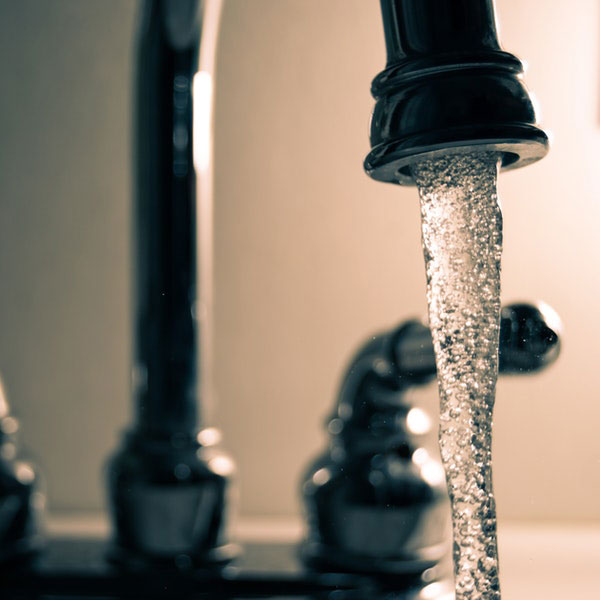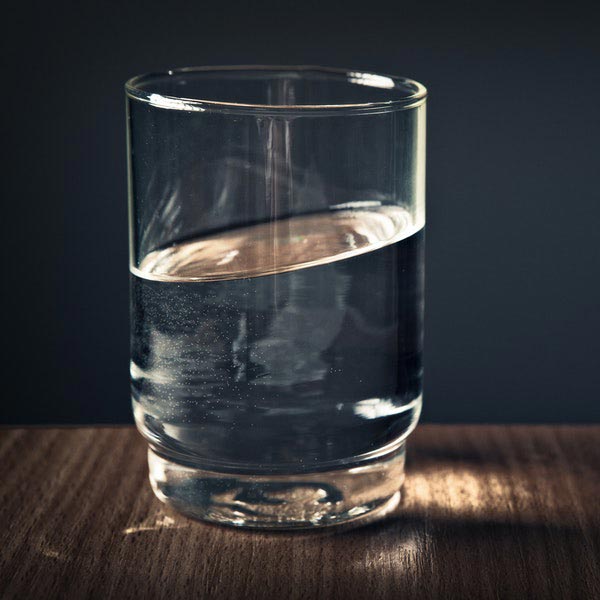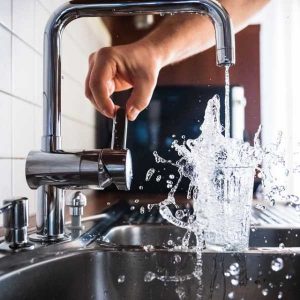Hard water strips the moisture from your skin and scalp, due to the presence of hard minerals. Calcium and magnesium ions are responsible for making your clothes scratchy, rough, and fading out their color as well.
This is why a water softener benefits you in multiple ways!
Water softeners solve this problem by turning hard water into soft water. This eliminates the root of all your hard water problems, giving you better hair, skin, no problems in water supply, all through one solution.
All it takes is to install a water softener for your whole house system.
To know how exactly your water softener gives you soft water, keep on reading!
Problems Of Hard Water
In hindsight, hard water doesn’t seem like a problem. However, it does cause a bunch of little problems that can turn into bigger problems as well. When these small problems increase, you’ll have higher water and plumbing bills to spend on.

Additionally, your detergent and cleaner intake doubles, which stands as an added cost because of these problems.
- Damage to your plumbing; the harder your water, the more it’ll become a problem for you. Water hardness causes mineral buildup due to the high hard mineral content. This becomes a bigger problem when air passes through dry pipes, further hardening the mineral deposits.
- Spotting on your appliances; Hard water will affect your appliances as long as they come in contact with them. These dissolved minerals leave behind residue that results in spotting and stains on appliances, washing machines, or sinks.
- Spotting on your tubs; You’ll face the same problem in your washroom tubs, sinks, showers. Hard water increasingly becomes a menace there too!
- Dry skin and hair: The presence of calcium and magnesium in hard water certainly doesn’t help in retaining moisture. Excess hard water use does the opposite giving a rough and dry feel to your scalp and skin.
- Clothes lose their color and texture; Using hard water in excess for anything is bad but it also takes a lasting toll on your clothes. Clothes start fading their color and become rough in texture.
4 Ways To Soften Hard Water
Ion Exchange Based Water Softening
The most common process to obtain softened water is through the ion exchange process. Ion exchange or salt-based water softeners soften water by removing hard minerals like calcium and magnesium with sodium or potassium.
This happens by completely coating the resin beads with a potassium or sodium solution in the ion exchange tank. This water softening system needs to regenerate regularly when the water softening ions are used up so the hardness minerals can be drained.
If you have a low iron concentration in your hard water( up to 5-6 ppm), your ion exchange water softener can remove the iron content in your water too.
However high iron content is usually present in well water but there are several water softeners for well water too!
However, when using a salt-based water softener, a high concentration of chlorine in your water supply can crack the resin beads. To prevent this, a pro tip is to keep your tank at 10% cross-link resin beads to combat the presence of chlorine.
These systems usually regenerate when there’s low water consumption. But if the soft water supply finishes during the day, these systems usually have a backup tank full of soft water.
Ion exchange systems don’t retain hard water minerals but instead eliminate them to make softened water.
If you have health concerns, we’d advise you to not gravitate towards this option. Ion exchange-based backup soft water leaves behind a strong salty taste. However, most consumers don’t have a problem with the lasting sodium taste.
Salt-Free Water Softening Alternative; Template Assisted Crystallization
Salt-free water softeners were used mainly for commercial use but have now been adapted for domestic use too. They are a great alternative compared to traditional water softeners.
Salt-free water softeners use template-assisted crystallization (TAC) technology. This process uses ceramic polymer beads on a template to attract hard water ions.
When hard water ions are attracted to these beads, they accumulate to form clusters. On accumulation, these microscopic clusters, grow further. They grow enough so they can break away from the polymer beads and join the soft water flow.
In this way, the TAC process, also known as Nucleation assisted crystallization(NAC), neutralizes hard water minerals and simultaneously retains them in the soft water supply.

Neutralization forms clusters that are insoluble and stable which means they won’t clump on your appliances and pipes to form buildup. Additionally, these water softeners make for healthy drinking water due to the presence of neutralized ions.
Even if any clumps form, they’re classified as soft-scale making them easier to remove and no residue is left behind.
However, TAC systems do need protection from iron through a pre-filter, unlike salt-based systems. The advantage of TAC systems is that they have almost no maintenance since they require no regeneration and are easily installed.
Reverse Osmosis
Reverse osmosis is another salt-free water conditioning system. Through the reverse osmosis process, hard water or water is forced through a series of multiple fine filters and a semi-permeable membrane.
This rids the water supply of any dissolved impurities, hard water minerals, and dissolved solids. Reverse osmosis water conditioners supply distilled water but since they get rid of hardness minerals, these systems also supply soft water.
Most RO systems cater to only one specific water point; your sink or faucet water. So you only get a distilled or soft water supply for that specific point, not your whole house system.
Keep in mind that hard water will pass normally through other appliances, water heaters, etc!
RO systems consume more water than other systems since two gallons of hard water will give you one gallon of conditioned water through an RO system.
In the long term, RO water isn’t healthy to consume unless minerals and other salts are added to it. They also require the membranes to be washed regularly, but don’t worry, the system will do that for you!
Chelation Water Conditioning
Chelation was widely used in commercial systems but is recently being used in household systems.
Chelation is known as a water conditioner instead of a water softener. This is because the chelation process conditions hard water ions so they don’t combine with chemicals in the water that forms soap scum on surfaces.
These systems don’t remove hard water ions from the water but change their state to make them less reactive with other chemicals.
In this way, magnesium and calcium minerals are retained in the soft water supply making it healthy to consume, with a low sodium concentration.
These conditioners use polyphosphate or citric acid through a cartridge to condition the hard water ions to prevent them from forming stains or soap scum on surfaces.
Any scale formed or existing, is easily removed and is further prevented from forming. However, these water conditioners should only be used for softening water that can be used within two days.
Chelation water conditioning systems require the cartridges to be replaced regularly for optimum conditioning. If you don’t hard water ions will accumulate in the cartridge making it difficult to expend the state of hard minerals.
FAQ On Softening Hard Water
How Can I Soften Water Without A Water Softener?
For drinking water, you can boil hard water and on cooling, white deposits will settle on the bottom. This can be easily separated.
Overall you can add one teaspoon of white vinegar for every 3 cups of hard water. In addition to vinegar, apple cider or baking soda can also be added while doing laundry. If you want to remove hard water stains, scrubbing with white vinegar or apple cider helps!
Does Boiling Water Remove Hardness?
Yes, it does! Especially for smaller usage, boiling water does the trick! Furthermore, if you boil hard water, it makes hard water salts sink to the bottom of your container. Whatever is left behind can be scooped out.
Boiling hard water will remove any unwanted tastes too, so if you want to remove the flat taste from softened water, there’s a remedy. Just pour the softened water back and forth to reoxygenate it.
Can You Drink Hard Water?
Yes, you can! The magnesium and calcium minerals present in hard water are healthy for consumption. However, an excess in hard water usage can cause serious problems for your organs and can cause diseases.
But it would take a massive amount of consumption for there to be any major health problems in the first place.
Conclusion
Getting a water softener is not a revolutionary choice in this day and age, but most people are unaware of the process.
With the detailed information above you’ll know exactly how your water softener softens hard water.
